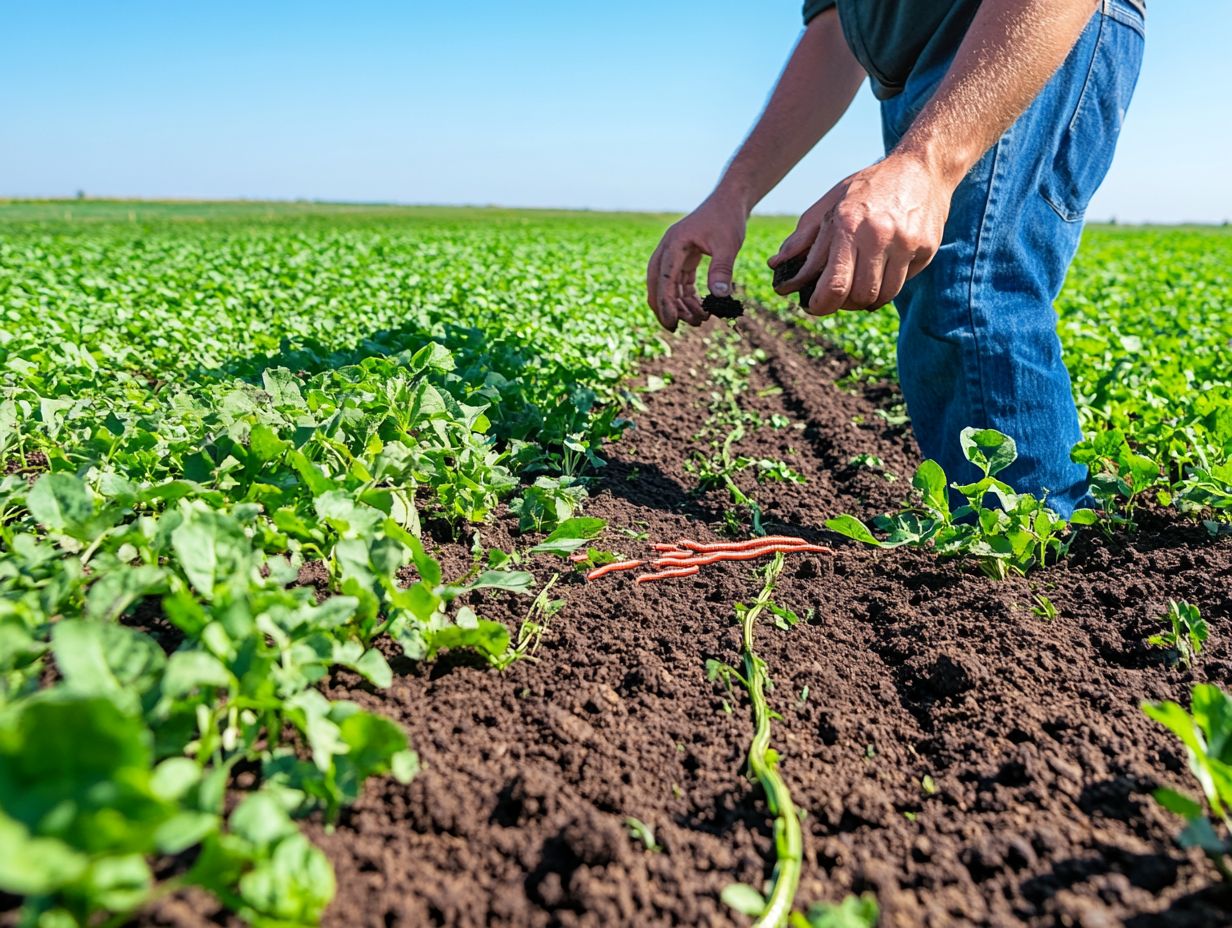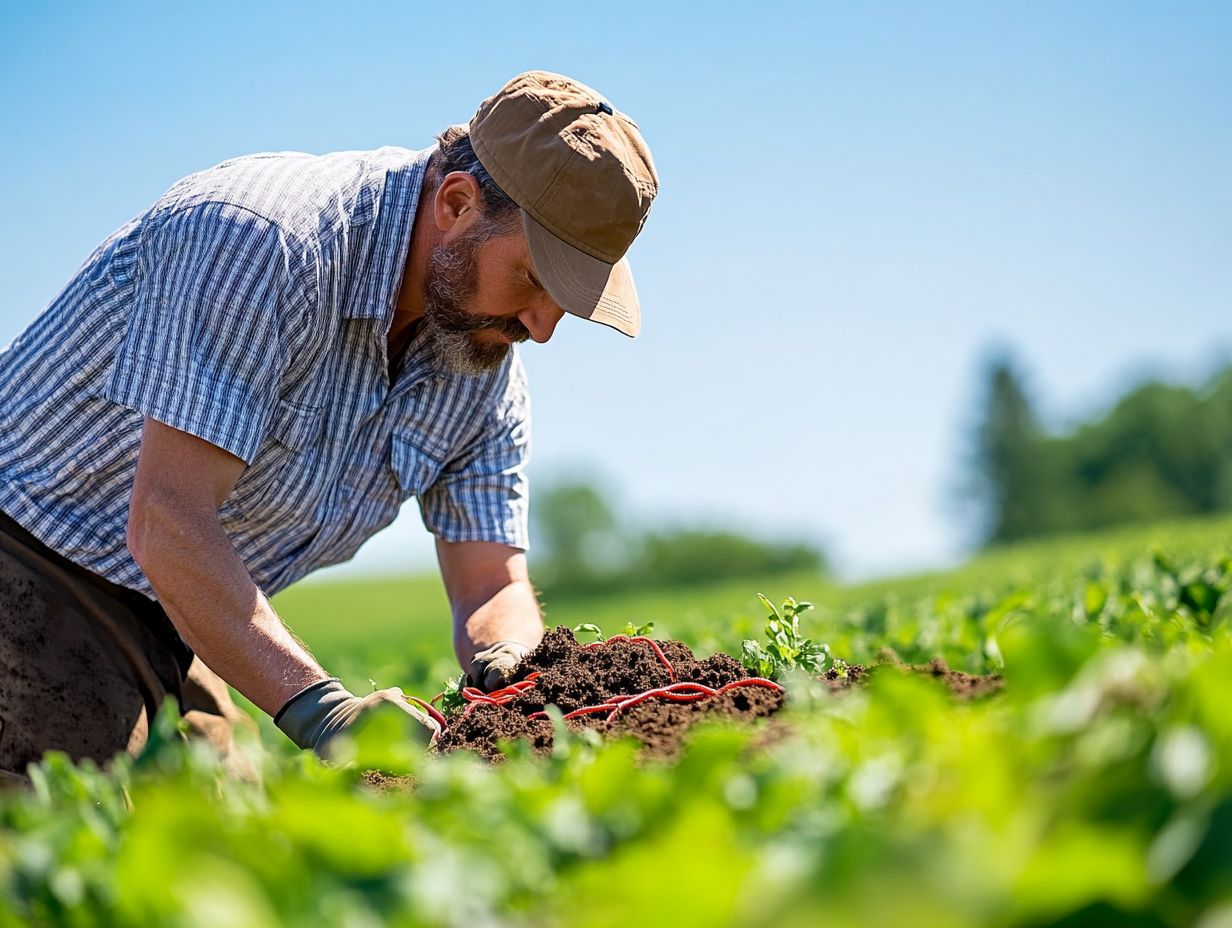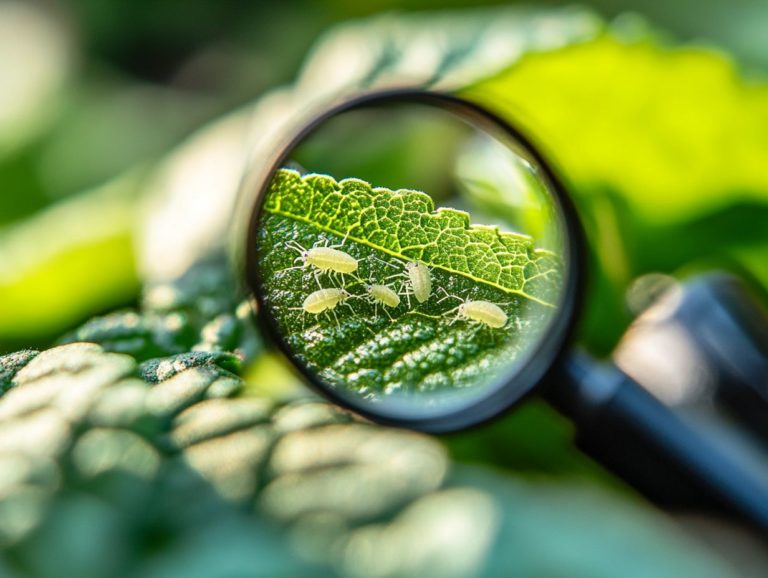The Role of Cover Crops in Pest Control
In agriculture, successful pest control is essential for healthy crops and sustainable practices. Pesticides have been traditional solutions, but their harmful effects on health and the environment are concerning.
Cover crops are a game changer. They enrich the soil while naturally controlling pests.
In this article, explore the importance of pest management, the role of cover crops, and how to integrate them into your farming strategies for a healthier approach.
Dive in to uncover the benefits and best practices for using cover crops in pest control efforts.
Contents
- Key Takeaways:
- The Importance of Pest Control in Agriculture
- What are Cover Crops?
- How Cover Crops Help with Pest Control
- Choosing the Right Cover Crops for Pest Control
- Implementing Cover Crops in Pest Management Strategies
- Additional Benefits of Cover Crops in Agriculture
- Frequently Asked Questions
- What are cover crops and how do they control pests?
- What types of pests can cover crops help control?
- Do cover crops only work in certain types of agriculture?
- How do cover crops attract beneficial insects?
- Can cover crops reduce the need for chemical pesticides?
- Are there any potential drawbacks to using cover crops for pest control?
Key Takeaways:

- Cover crops provide a natural approach to pest control, reducing the need for harmful pesticides.
- Diverse cover crop species target specific pests, disrupting their habitat and reducing their numbers.
- Proper management of cover crops, alongside pest management strategies, leads to long-term pest control and better crop production.
The Importance of Pest Control in Agriculture
Pest control is a vital pillar of sustainable agriculture. It affects both crop yields and the health of agricultural ecosystems.
Employing effective pest management strategies can significantly cut down pest issues while promoting environmental sustainability. This thoughtful approach fosters high-quality seed production and protects beneficial insects.
The Negative Effects of Pesticides
The downsides of pesticides extend beyond pest suppression. They often harm soil health and environmental sustainability.
Conventional pesticides can disrupt beneficial flora and fauna, creating imbalances in ecosystems. Overreliance on these chemicals may lead to pest resistance, complicating management efforts.
This degradation can reduce crop productivity and rob plants of essential nutrients. The habitats for beneficial insects like pollinators are shrinking due to pesticide use, negatively impacting biodiversity.
These issues not only threaten immediate crop yields but also jeopardize long-term farming sustainability. The agricultural sector needs innovative pest control strategies that prioritize ecological balance while reducing harmful chemical use.
What are Cover Crops?
Cover crops are plants grown to improve soil health and fertility, not for yield. Varieties like clover and buckwheat enhance soil structure and prevent erosion.
Incorporating cover crops into crop rotation boosts soil fertility. These crops also help manage pests by creating habitats for beneficial insects and reducing pest populations.
Definition and Types of Cover Crops
Cover crops are your secret weapon. They are grown in off-seasons or alongside primary crops to enhance soil health and reduce pest pressure. There s a whole range of them, each tailored to meet specific agricultural needs.
These plants are essential for maintaining soil moisture and improving the way nutrients move through the soil. For instance, legumes fix nitrogen. Meanwhile, deep-rooted grasses work tirelessly to prevent erosion. By incorporating cover crops into your rotation, you re not just planting; you re cultivating a diverse ecosystem that attracts beneficial insects like ladybugs and lacewings nature s own pest control.
The organic matter left behind when cover crops decompose enriches your soil. This boosts microbial activity and enhances resilience against diseases. These factors all lead to healthier, more productive crop yields. This makes your farming practices not just sustainable but remarkably effective.
How Cover Crops Help with Pest Control

Cover crops are vital heroes in pest control! They boost the activity of living organisms in the soil and foster the natural enemies of pests. By enhancing crop diversity and providing habitats for beneficial insects, cover crops effectively suppress pest populations. Additionally, they play a crucial part in water management, significantly diminishing your reliance on chemical insecticides.
They also disrupt pest life cycles and minimize soil disturbances. This promotes an ecological balance that reinforces sustainable pest management practices in your agricultural endeavors.
Mechanisms and Benefits
Cover crops play a vital role in effective pest control through several mechanisms. They enhance soil moisture retention, boost biological activity, and support beneficial insects that act as natural pest suppressors. Additionally, understanding the role of cover crops in soil regeneration fosters conditions that favor these natural allies, helping to regulate pest populations and reduce threats in agricultural ecosystems.
The diversity introduced by various cover crop species disrupts pest interactions. It promotes healthier crops, leading to improved yields and decreased reliance on chemical pest control methods.
These crops not only enhance soil structure and fertility. They also improve water infiltration, minimizing runoff and lowering the risk of soil erosion. A well-maintained cover crop retains moisture in the soil, essential for sustaining plant health during dry spells.
By attracting beneficial insects like ladybugs and lacewings, cover crops create a habitat that nurtures a balanced ecosystem. This holistic approach cultivates a thriving agricultural environment and strengthens resilience against pests and diseases.
Ultimately, these practices contribute to a more sustainable agricultural model that prioritizes ecological health, biodiversity, and long-term productivity. This means farming in a way that protects the environment while still producing healthy crops.
Choosing the Right Cover Crops for Pest Control
Selecting the right cover crops for effective pest control requires considering several key factors. These include soil type, climate, and specific pest pressures present in your agricultural setting.
As an agricultural producer, it’s essential to evaluate the advantages of various cover crop species. Consider how well they fit into your existing crop rotation plans. This thoughtful approach will optimize your pest management strategies.
Gaining a clear understanding of the interactions between cover crops and your primary crops is vital for enhancing soil health. This understanding is essential for achieving sustainable agricultural success.
Explore different cover crops today and boost your pest control strategies for healthier crops!
Factors to Consider
When selecting cover crops for pest management, consider key factors. These include soil health, crop diversity, and common pests in your area.
Choose cover crops that promote ecological sustainability. They should align with your farming practices.
The timing of planting and compatibility of different cover crop species should guide your decisions.
Understanding the local climate and soil conditions is essential; these elements greatly influence the growth and effectiveness of your cover crops.
Evaluate your long-term pest management goals, such as reducing dependence on chemical pesticides, enhancing crop resilience, and improving pest suppression methods.
Consider the unique characteristics of potential cover crops, including their root structures and nutrient contributions. These factors play a significant role in pest deterrence and overall soil quality.
By making informed choices, you will tackle immediate pest challenges and lay a solid foundation for a healthier, more sustainable agricultural ecosystem.
Implementing Cover Crops in Pest Management Strategies
To implement cover crops in pest management, take a thoughtful approach. Focus on best practices, optimal timing, and integration with your farming systems.
By leveraging insights from fellow farmers, you can enhance your pest control outcomes while nurturing soil health through conservation tillage and other sustainable practices.
This application supports pest suppression and cultivates an environment that encourages beneficial insects, bolstering overall crop production and soil fertility.
Best Practices and Tips for Integrated Pest Management

Use best practices to select the right cover crop species. Plant at the right time and manage effectively to improve soil moisture and crop yields.
Limit the use of pest control chemicals. Focus on ecological sustainability instead.
To maximize the effectiveness of your cover crops, regularly assess local conditions think soil health, climate, and specific pest challenges and pest management.
Establish a rotation plan for crop rotation and conservation tillage with various cover crops. This disrupts pest life cycles and enhances nutrient cycling.
Engage with local agricultural extension services and farmer cooperators; they’ll offer invaluable insights and updates on the latest research, ensuring you stay informed about best practices tailored to your environment.
Additional Benefits of Cover Crops in Agriculture
Cover crops offer many benefits beyond pest control. They enhance soil health and promote agricultural and environmental sustainability.
By improving soil structure, retaining moisture, and enriching the soil with organic material and beneficial flora, cover crops play a crucial role in ensuring long-term productivity.
Furthermore, they align with sustainable practices that enhance biological activity and champion environmental stewardship through habitat enhancement, offering a comprehensive approach to modern crop production that balances yield with ecological integrity.
Soil Health and Sustainability
Integrating cover crops into your farming practices can significantly improve soil health. It also strengthens your commitment to sustainable farming and managing pests naturally.
Cover crops promote organic material, enhance soil structure, and improve nutrient cycling. This creates a thriving ecosystem that can withstand pest pressures and environmental challenges.
These beneficial plants introduce living roots that anchor the soil. They effectively reduce erosion and improve water retention, which is essential for farmers dedicated to environmental stewardship.
By adopting cover crops, you boost biodiversity and enable your land to function as a system that captures carbon and helps control pests naturally. This is a vital step toward a more resilient agricultural system, enhancing both productivity and ecological balance.
Frequently Asked Questions
What are cover crops and how do they control pests?
Cover crops are plants grown to protect and enrich the soil. They help reduce pest populations by attracting beneficial insects and improving soil health.
What types of pests can cover crops help control?

Cover crops can control various pests, including insects, weeds, and diseases. They attract predators and parasites that keep pest insects in check, and understanding the role of fungi in pest management can further enhance their effectiveness.
Do cover crops only work in certain types of agriculture?
No, cover crops benefit various agricultural systems, including conventional, organic, and sustainable farming. They are also useful in home gardens and landscapes.
How do cover crops attract beneficial insects?
Cover crops attract beneficial insects by providing food and shelter. Plants like buckwheat and clover produce nectar and pollen, while mustards and sunflowers offer shelter.
Can cover crops reduce the need for chemical pesticides?
Yes, cover crops provide a natural alternative for pest control. They attract beneficial insects and improve soil health, helping to balance pest populations, as highlighted in the role of microorganisms in pest control.
Are there any potential drawbacks to using cover crops for pest control?
While cover crops help with pest control, they may also attract pests like slugs and snails. Careful planning and monitoring are essential to avoid creating new pest problems.






